The island of Mallorca is known for its sun-soaked shores, temperate climate and the famous relaxed Mediterranean culture and cuisine. In this Mallorca Travel Guide, I will give an overview of everything you need to know if you are planning a visit to this Balearic island.
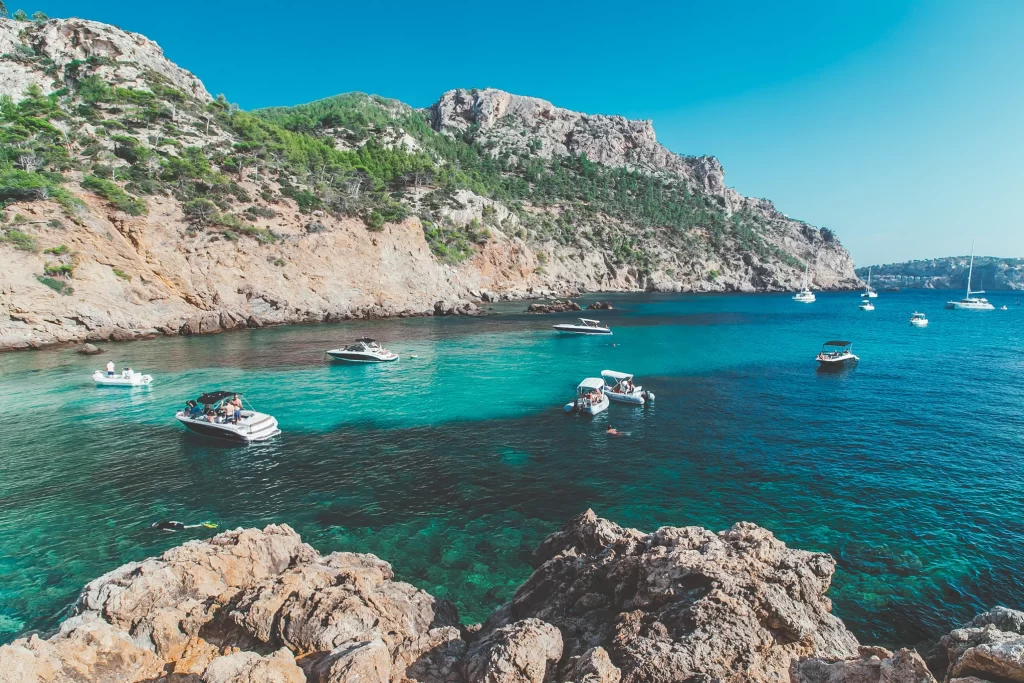
I may earn a commission (at no extra cost to you) if you make a purchase through one of my affiliate links.
If you don’t know me, I am a British travel blogger with a passion for European destinations, especially islands! I have visited Mallorca at least 10 times, travelling extensively all around the island each time. My last visit was in Spring 2022 where I revisited many of the beautiful towns in Mallorca.
I have split this Mallorca Travel Guide into 14 sections:
- Mallorca Practical Information
- Geography of Mallorca
- Getting to Mallorca
- Best Time to Visit Mallorca
- Towns & Cities in Mallorca
- How to Get Around Mallorca
- Dining and Nightlife in Mallorca
- Things to do in Mallorca
- Things to See in Mallorca
- Shopping and Markets in Mallorca
- Where to Stay in Mallorca
- Map of Hotels in Mallorca
- Sustainable travel in Mallorca
- FAQs for Mallorca Travel Guide
Let’s proceed with the ultimate Mallorca Travel Guide.
1. Mallorca Travel Guide: Practical Information.
The island of Mallorca (or English spelling ‘Majorca’) is the largest island of the Balearic Islands.
- Time zone: GMT +1
- Currency: Euro (EUR)
- Language: Spanish (and locals speak ‘Mallorquin’)
- Power Adaptors: Type C & F
- Flight time from London: approx. 2 hours
Transportation: Renting a car is the most convenient way to explore Mallorca, especially if you plan to venture beyond the main tourist areas. Alternatively, public buses and taxis are available for getting around. I recommend Discover Cars for car rental (a car comparison website)
Weather: Mallorca enjoys a Mediterranean climate, with hot summers and mild winters. The peak tourist season is from June to August, but spring and autumn offer pleasant weather and fewer crowds.
Respecting Local Customs: Mallorca is a Spanish island with its own distinct culture and customs. Respect local traditions, such as siesta time (afternoon rest), to fully immerse yourself in the island experience.
Language: The official languages of Mallorca are Catalan and Spanish (Castilian), with the locals adopting their own dialect called Mallorquin. English and German are widely spoken throughout the island, especially in the tourist areas. You might like to take a Spanish phrase book like this one.
2. Geography of Mallorca.
Mallorca, the largest island in the Balearic archipelago, lies in the western Mediterranean Sea off the eastern coast of Spain. Its diverse landscape features rugged mountains, fertile plains, and picturesque coastline.
Mountainous Interior:
The Serra de Tramuntana range dominates Mallorca’s northwest, with peaks over 1,400 metres (4,600 feet). This UNESCO World Heritage Site offers dramatic scenery and outdoor activities like hiking and rock climbing. These give access to a variety of adventure activities such as canyoning, coasteering, rock climbing, cliff jumping and abseiling.
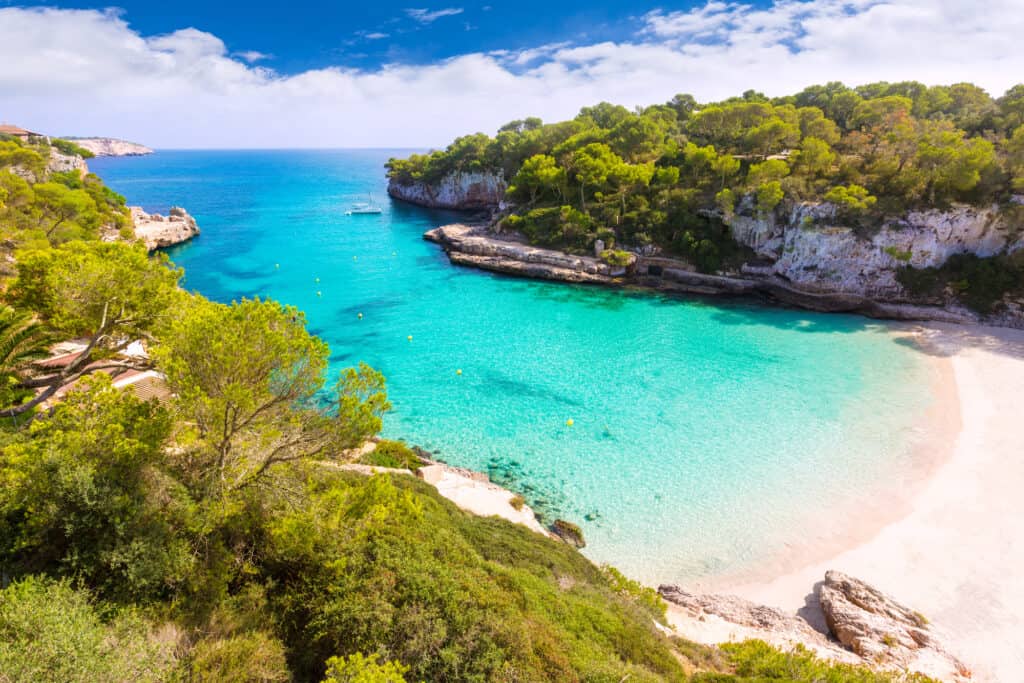
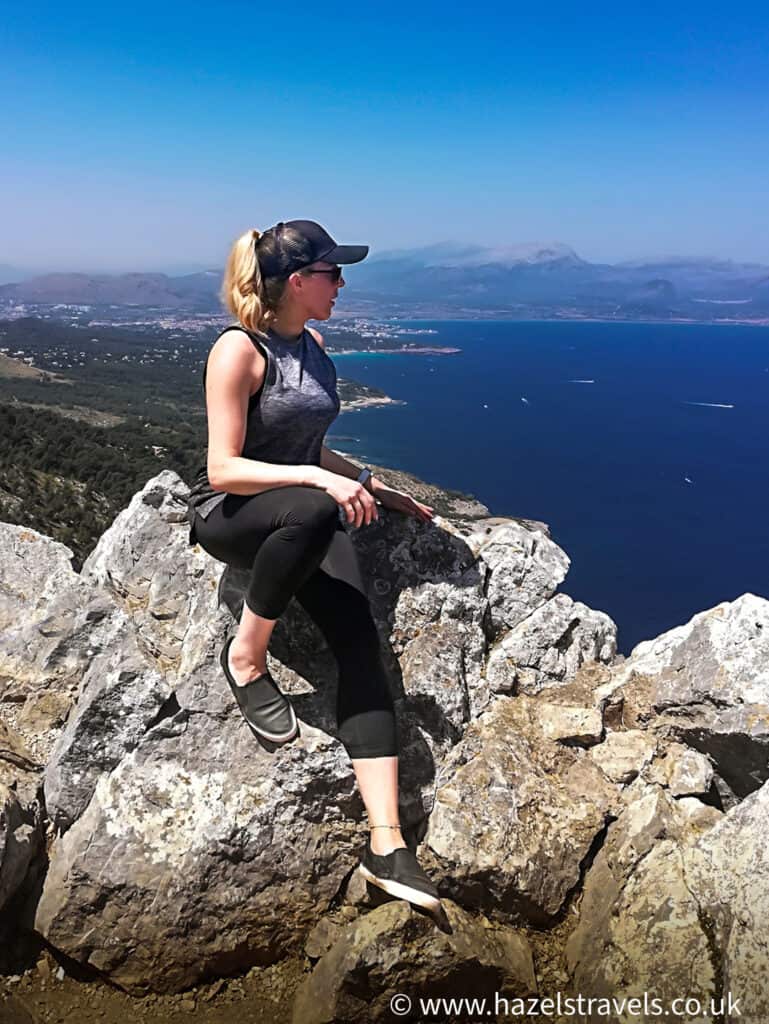
Coastal Plains:
Surrounding the mountains, Mallorca’s coastal plains are abundant with farmland, olive groves, and vineyards. Sandy beaches, hidden coves, and cliffs line the coastline, providing opportunities for sunbathing, swimming, and water sports.
Natural Parks and Reserves:
Protected areas like Parc Natural de S’Albufera de Mallorca and Mondragó Natural Park safeguard the island’s biodiversity, offering habitats for wildlife and opportunities for nature lovers.
Coastal Features:
Mallorca’s coastline boasts sandy beaches like Es Trenc, rocky coves, and charming harbours such as Port de Sóller. Seaside villages offer picturesque settings for coastal exploration and relaxation.
The other Balearic Islands are Menorca, Ibiza and Formentera. Mallorca’s capital, Palma, is the autonomous capital of all of the Balearic islands.
3. Getting to Mallorca.
By Air: The island is served by Palma de Mallorca Airport (PMI), which receives flights from major cities across Europe and beyond. From the airport, you can easily reach your accommodation by taxi, bus, or rental car.
By Sea: Ferries operate between Mallorca and mainland Spain, as well as neighbouring islands such as Ibiza and Menorca. This option provides a scenic journey and is popular among those travelling with vehicles.
4. The best time to visit Mallorca.
Mallorca is a Spanish island, and thus enjoys a warm mediterranean climate. Summers are hot, often over 30 degrees, and there is very little rainfall. You will need plenty of sunscreen, and I recommend taking a foldable sun hat or foldable sun umbrella to protect your head from the sun.
The cooler spring/autumn months in the shoulder season may be a better choice for cycling and hiking, with temperatures in the mid twenties.
5. Towns and Cities in Mallorca.
Mallorca has so many stunning towns and cities to visit, you will be spoilt for choice. You could start at the capital Palma, which is also conveniently where the international airport is situated. Palma gets busy, so it is best enjoyed off-season.
Here is a summary of some of the best towns to visit in Mallorca:
5.1 Palma:
The capital city of Mallorca, Palma is a vibrant metropolis boasting a rich history, stunning architecture, and cultural attractions. Highlights include the majestic Palma Cathedral, the historic Old Town with its narrow cobblestone streets, elegant plazas, and charming boutiques, as well as Bellver Castle offering panoramic views of the city.
5.2 Sóller:
Nestled in a picturesque valley amidst the Tramuntana Mountains, Sóller is known for its scenic beauty, orange groves, and quaint architecture. You can explore the town’s historic centre, ride the vintage wooden tram to the nearby port of Port de Sóller, or embark on hiking trails in the surrounding mountains.
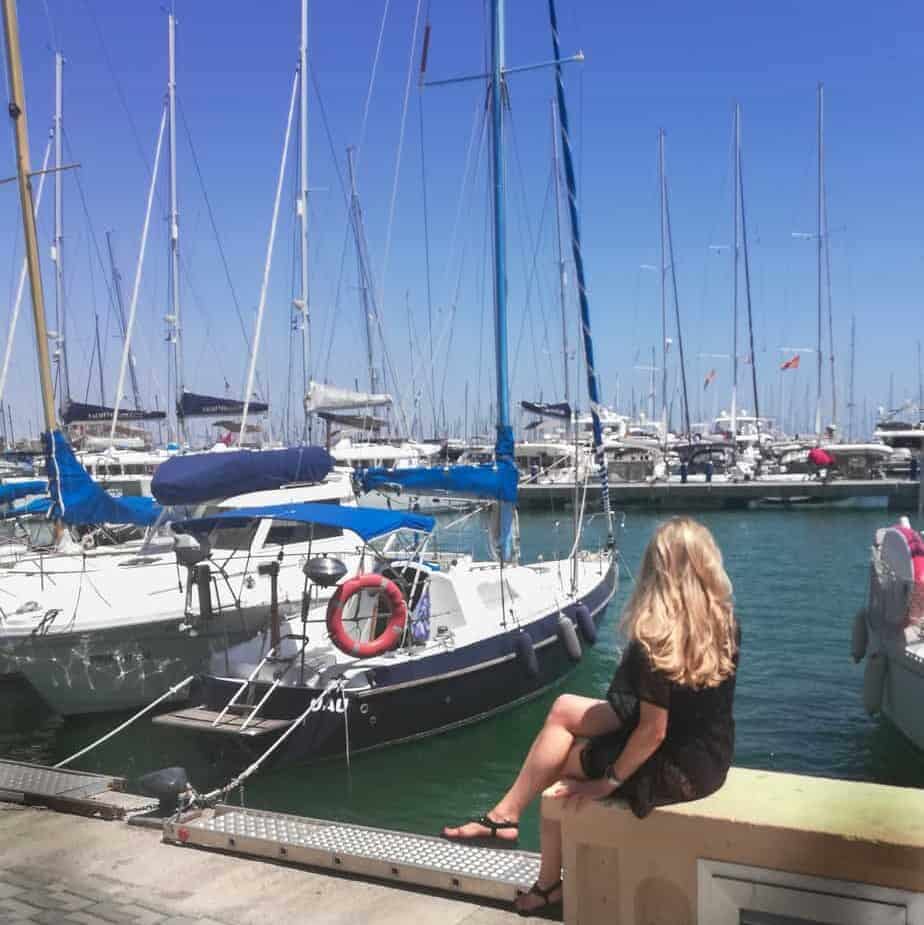
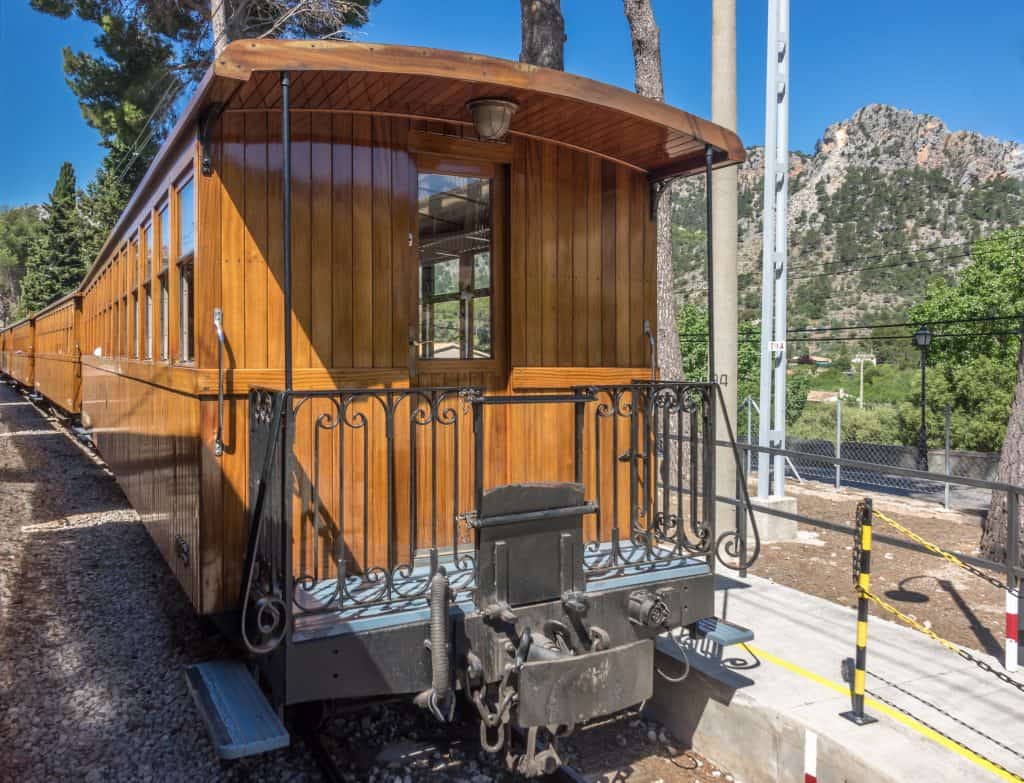
5.3 Valldemossa:
This enchanting hilltop village is famed for its romantic ambiance, winding streets, and historic landmarks. Highlights include the Royal Carthusian Monastery (Real Cartuja), where composer Frédéric Chopin and writer George Sand once stayed, and the picturesque views of the surrounding countryside.
5.4 Pollensa (Pollença):
Located in the northern part of the island, Pollensa is a charming town known for its traditional character, historic buildings, and cultural heritage. You can explore the town’s medieaval streets, visit the Calvary Steps for panoramic views, or relax in the main square lined with cafes and restaurants.
5.5 Alcúdia:
Situated on the northeastern coast, Alcúdia is renowned for its well-preserved medieval walls, historic old town, and vibrant atmosphere. You can explore the ancient Roman ruins of Pollentia, stroll along the bustling market streets, or relax on the nearby sandy beaches.
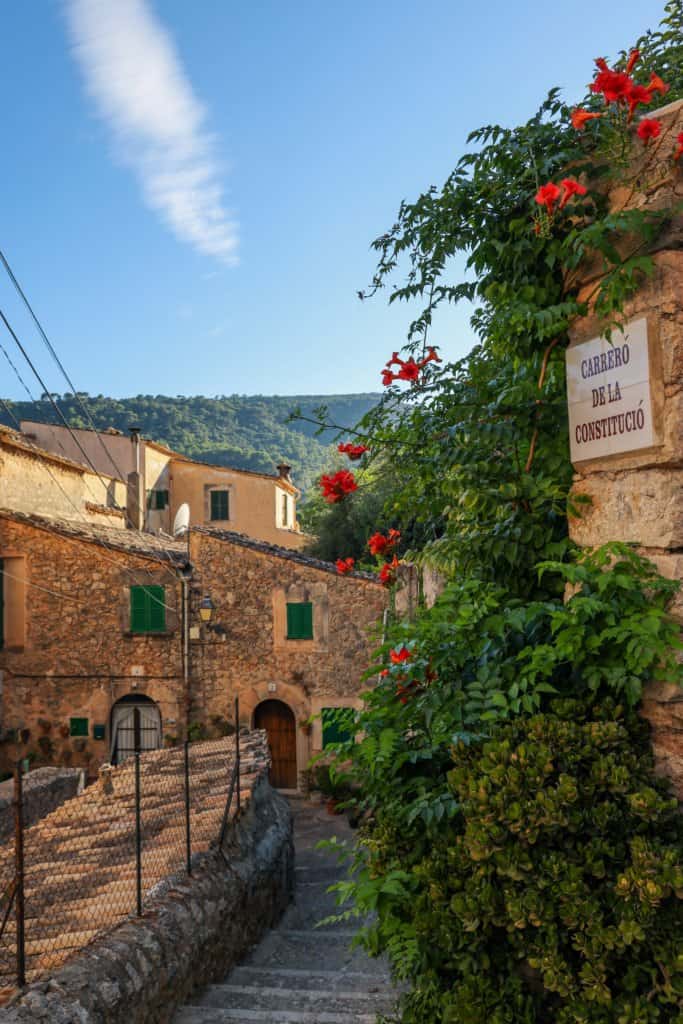
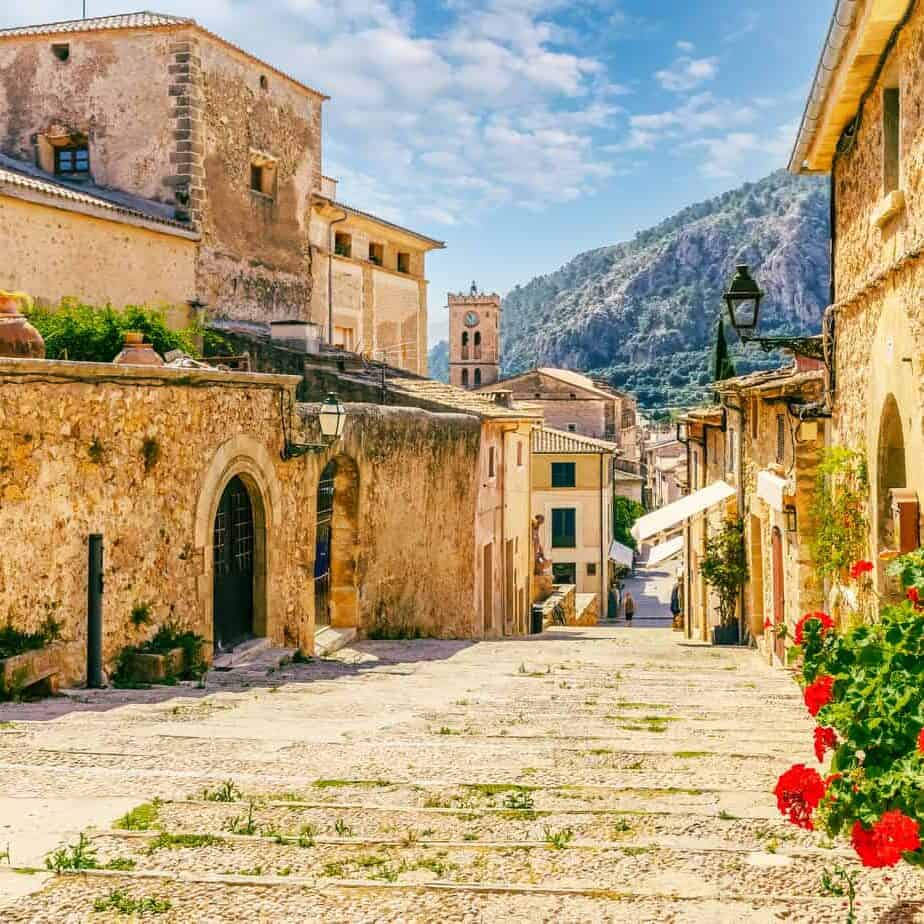
5.6 Fornalutx:
Often referred to as one of the most beautiful villages in Spain, Fornalutx is a hidden gem nestled in the Tramuntana Mountains. Characterised by its stone houses, flower-filled streets, and stunning mountain scenery, Fornalutx offers a peaceful retreat away from the crowds.
5.7 Port de Sóller:
This charming seaside resort town is located on Mallorca’s northwest coast and is renowned for its natural beauty, sandy beaches, and scenic harbour. You can enjoy leisurely walks along the promenade, explore the town’s shops and restaurants, or take boat trips to nearby coves and beaches.
5.8 Andratx:
Situated in the southwest of Mallorca, Andratx is a picturesque town surrounded by rugged mountains and fertile valleys. You can explore the town’s historic ceneer, visit the 13th-century Son Mas Castle, or enjoy outdoor activities such as hiking and cycling in the surrounding countryside.
You can read more on these towns and cities in my blog post 24 Best Places to Visit In Mallorca.
6. How to get around Mallorca.
Getting around Mallorca is relatively easy, with several transportation options available to visitors:
6.1 Renting a car in Mallorca:
Renting a car is a popular choice for exploring Mallorca, especially if you want the freedom to travel at your own pace and venture off the beaten path. My preferred car rental company is Discover Cars (mainly due to their excellent rates, but also because their customer service is great too). In Mallorca they drive on the right hand side.
6.2 Public Transportation:
If you are getting public transport from the airport, you will need the number 1 or 21 bus to the Intermodal Station in Palma, and then switch to a local bus/metro/train to your destination.
Buses and trains are operated by TIB (Transport de les Illes Balears). Buses connect major towns and resorts, with routes radiating from Palma to destinations across the island. The historic Palma to Sóller train, known as the “Orange Express,” offers a scenic journey through the mountains to the charming town of Sóller.

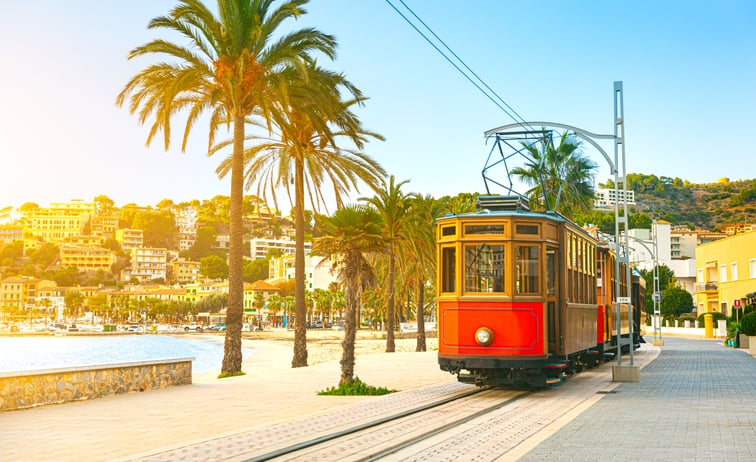
A great trip using public transport is to start in Palma, then get the scenic vintage train to Soller. Then you can catch the tram to the Soller port, followed by a boat to Sa Calobra. I can personally recommend this tour which does all of the above without you having to plan anything yourself.
6.3 Taxis in Mallorca:
Taxis are readily available in Mallorca, particularly in urban areas and tourist hotspots. They provide a convenient option for short journeys or travelling between towns, although fares can be relatively expensive compared to other modes of transportation.
6.4 Cycling in Mallorca:
Mallorca is a popular destination for cycling enthusiasts, with numerous designated cycling routes and scenic coastal roads. Check out the Sa Calobra road (Sa Calobra means ‘snake’ in Spanish) which spectacularly cuts through the mountains.
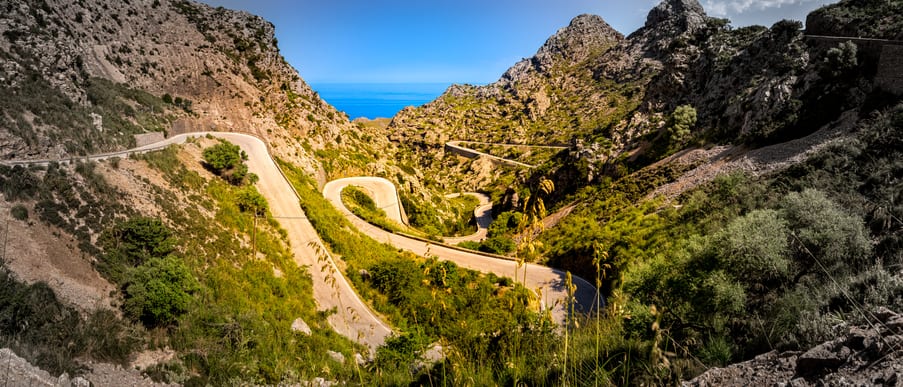
There are lots of cycling clubs and bicycle rental places in Mallorca, and some villas and apartments also come with free bike rental too. There is also a great e-bike tour in Palma, which allows you to see all of the major sights in just a few hours.
6.5 Travelling by Boat in Mallorca:
For travel between coastal towns and beach resorts, boat services are available, particularly during the summer months. Ferries and water taxis operate routes connecting Palma with destinations such as Port de Sóller, Port d’Andratx, and Port de Pollença.
6.6 Walking in Mallorca:
Mallorca’s compact towns and cities, particularly Palma and smaller villages, are best explored on foot. Wander through historic streets, explore local markets, and soak up the island’s ambiance at a leisurely pace.
7. Dining and Nightlife in Mallorca.
My favourite part of any Mallorca trip – the amazing dining and nightlife!
7.1 Gastronomy in Mallorca:
Mallorca is famous for its culinary delights, from fresh seafood and paella to hearty ensaïmades (pastries) and sobrasada (cured sausage), both of which are protected foods. Don’t miss the opportunity to dine at beachfront restaurants serving Mediterranean cuisine with a view. For casual dining, Mallorcan tapas is the name of the game.
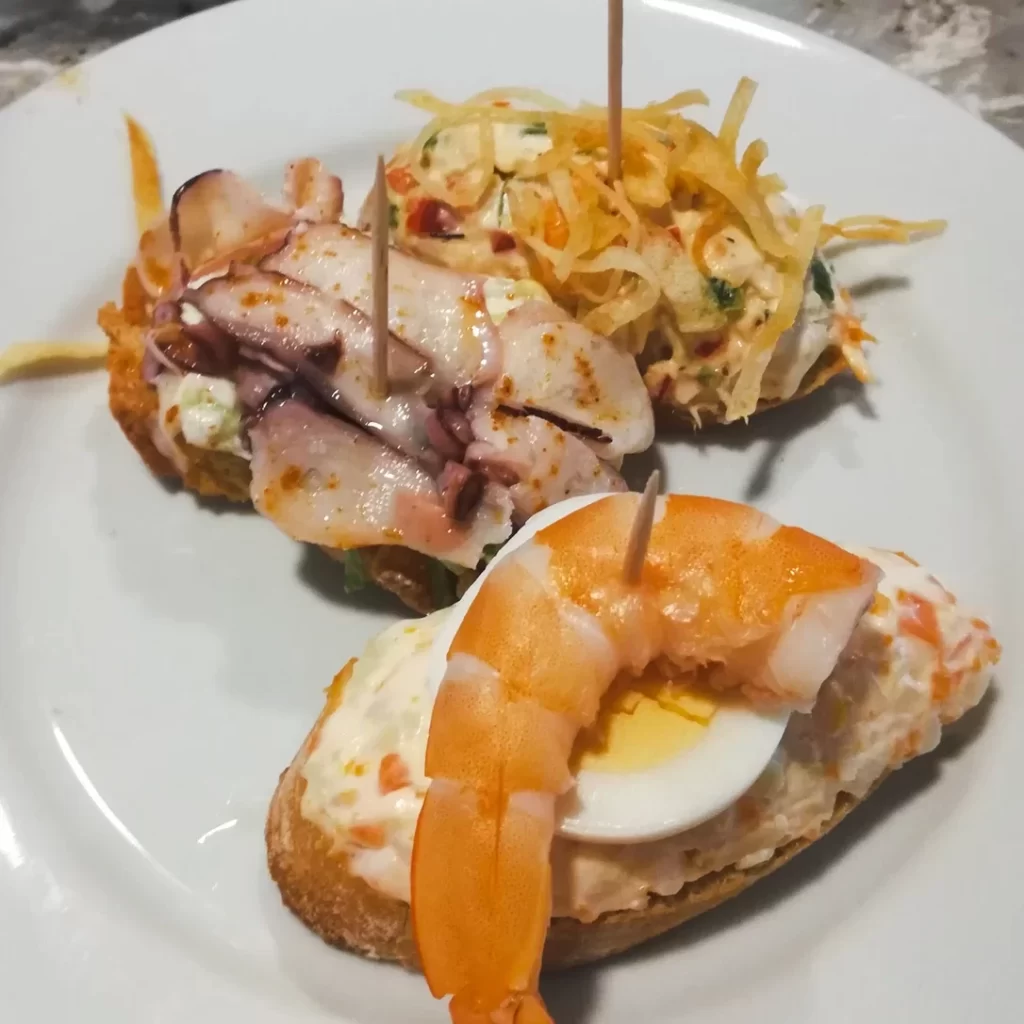
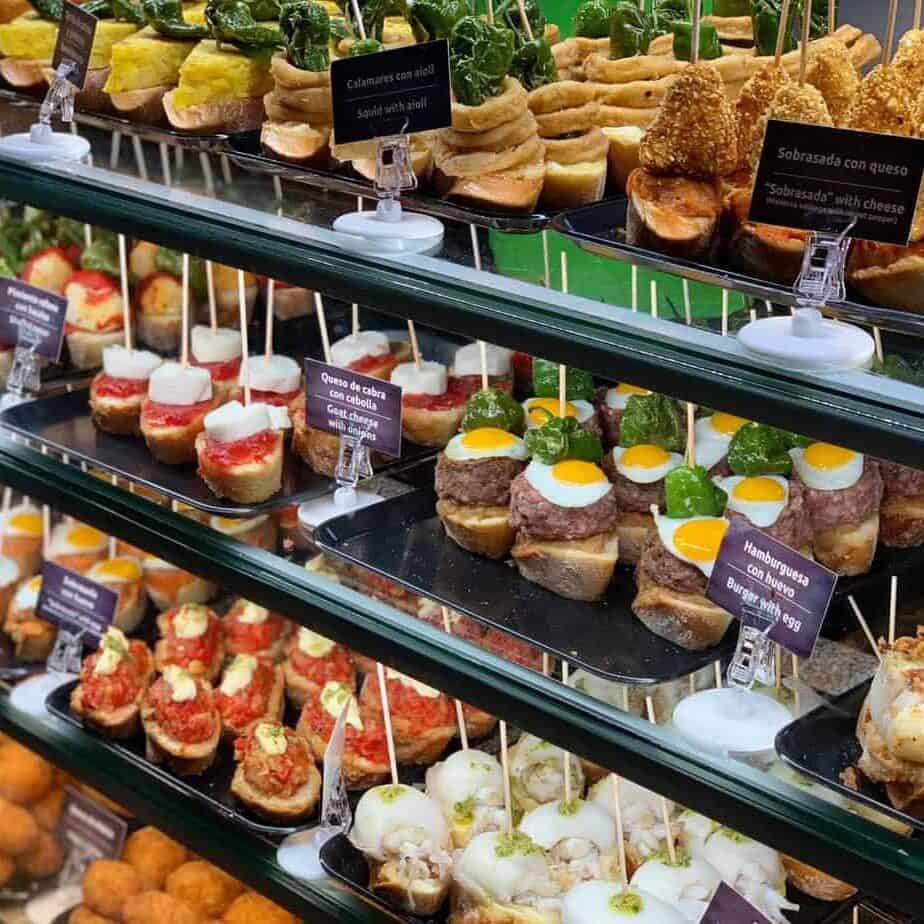
Further Reading: What to Eat in Mallorca.
7.2 Nightlife in Mallorca:
You can experience the island’s vibrant nightlife in areas like Palma’s La Lonja district, where you’ll find cocktail bars, clubs, and live music venues. If you’re in Palma, I also recommend hopping over to Andratx for some cool bars and a chill vibe. During the summer months, beach clubs and open-air parties are popular choices for nocturnal entertainment. Magaluf is the popular choice for young party-goers.
8. Things to do in Mallorca.
In this Mallorca travel guide, I am recommending things to do in Mallorca, and also things to see in Mallorca (next section).
Beach Hopping
Mallorca is famous for its pristine beaches. From bustling resorts to secluded coves, there’s a beach to suit every preference. Don’t miss iconic spots like Es Trenc, Cala Agulla, and Playa de Muro.
Explore Palma
Wander through the narrow streets of Palma’s Old Town, admiring historic architecture, browsing boutiques, and sampling local cuisine at tapas bars and restaurants.
Cultural Sites
Visit ancient landmarks such as the Almudaina Palace, a former Moorish fortress, and the imposing Cathedral of Santa Maria, known as La Seu. Explore the medieaval streets of Valldemossa and Sóller, famed for their beauty and charm.
Outdoor Activities
Mallorca’s diverse landscape offers opportunities for hiking, cycling, and water sports. Embark on a scenic hike in the Tramuntana Mountains, cycle along coastal roads, or try your hand at sailing, snorkelling, or paddleboarding.
Wine Tasting
Discover Mallorca’s wonderful wine scene by visiting local vineyards and bodegas. Sample unique varietals such as Manto Negro and Prensal Blanc, accompanied by traditional tapas.
9. Things to See in Mallorca.
Palma Cathedral (La Seu)
No Mallorca travel guide would be complete without this most iconic landmark, Palma Cathedral. It is a masterpiece of Gothic architecture, with soaring spires, intricate rose windows, and ornate interiors. It also includes works by renowned artist Antoni Gaudí (read more here).
Bellver Castle
Perched atop a hill overlooking Palma, Bellver Castle is a unique circular fortress dating back to the 14th century. You can explore its well-preserved ramparts, inner courtyard, and archaeological museum, offering panoramic views of the city and surrounding countryside.
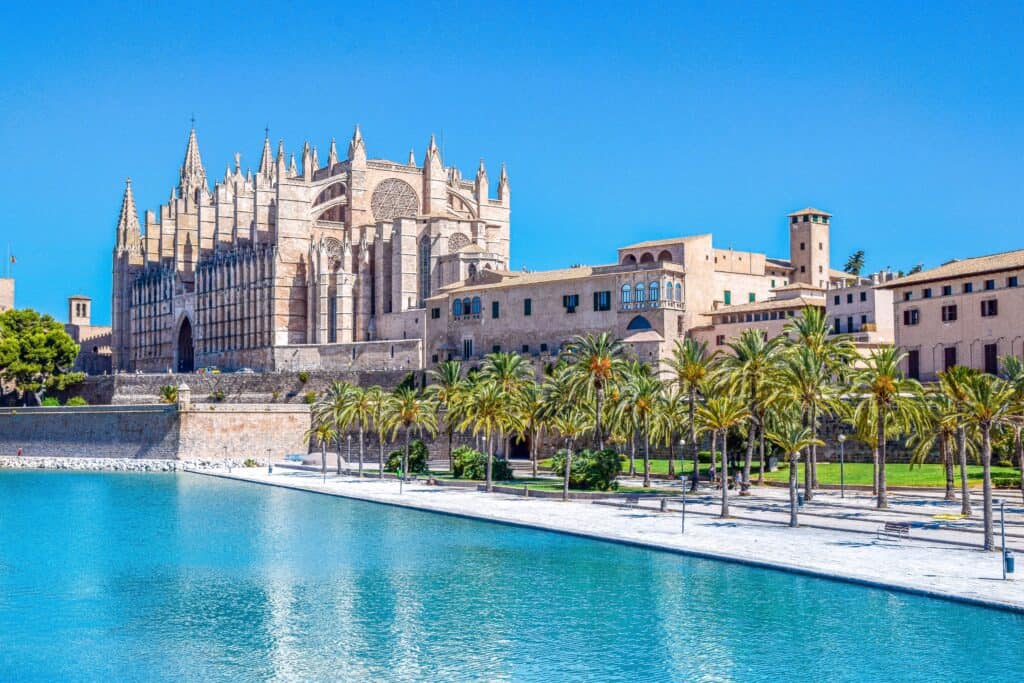
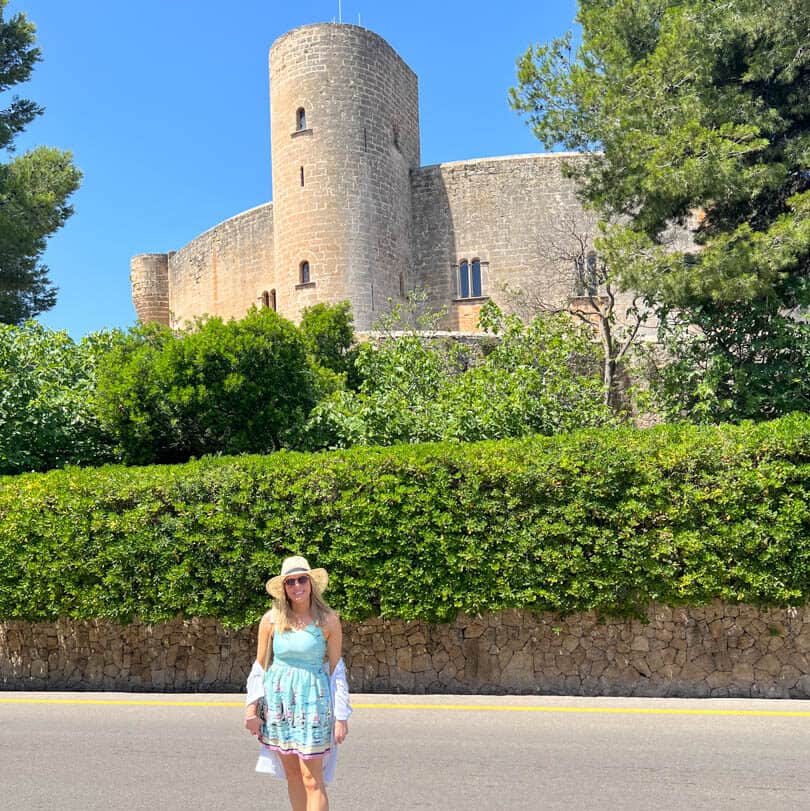
Serra de Tramuntana
Designated as a UNESCO World Heritage Site, the Tramuntana Mountains offer breathtaking landscapes, picturesque villages, and hiking trails. Highlights include the scenic villages of Valldemossa, Deià, and Fornalutx, as well as the challenging GR 221 hiking route.
Caves of Drach (Cuevas del Drach)
Explore a subterranean world of stalactites, stalagmites, and underground lakes at the Caves of Drach near Porto Cristo. You can also witness a mesmerising classical music concert performed on boats gliding across the illuminated lake.
Es Trenc Beach
Known for its crystalline waters and pristine white sand, Es Trenc is one of Mallorca’s most beautiful beaches. Spend a day sunbathing, swimming, and enjoying water sports at this natural paradise on the island’s southeast coast.
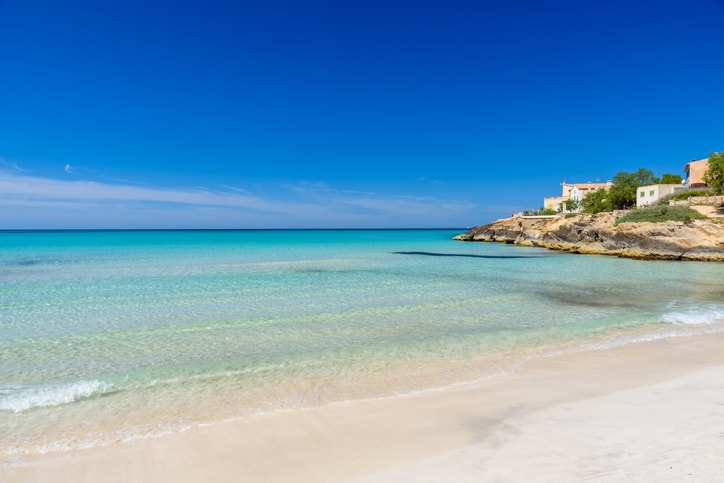
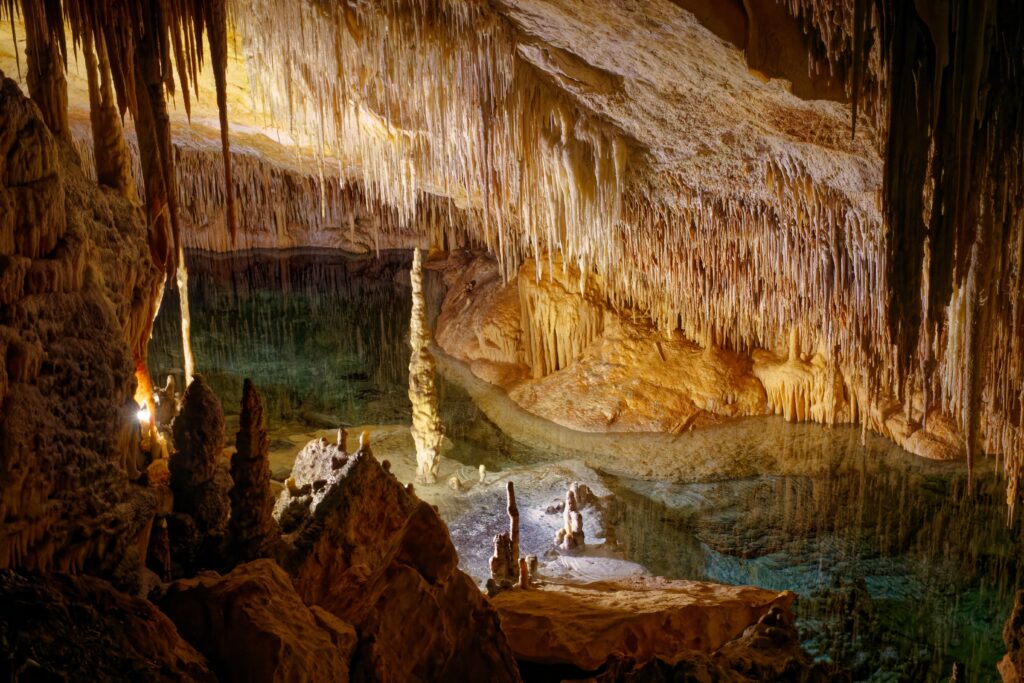
Cap de Formentor
Located at the northern tip of Mallorca, Cap de Formentor offers dramatic coastal scenery, rugged cliffs, and panoramic viewpoints overlooking the Mediterranean Sea. Drive or cycle along the scenic road to reach the iconic lighthouse at the peninsula’s end.
Alcudia Old Town
Step back in time as you wander through the medieaval streets of Alcudia’s Old Town. Discover ancient city walls, historic buildings, and charming squares lined with cafes, shops, and galleries.
Puig de Randa
Embark on a pilgrimage to Puig de Randa, a sacred mountain in the heart of Mallorca. Climb to the summit to visit three monasteries—Sanctuari de Cura, Santuari de Gràcia, and Santuari de Nostra Senyora de la Consolació—and enjoy panoramic views of the island below.
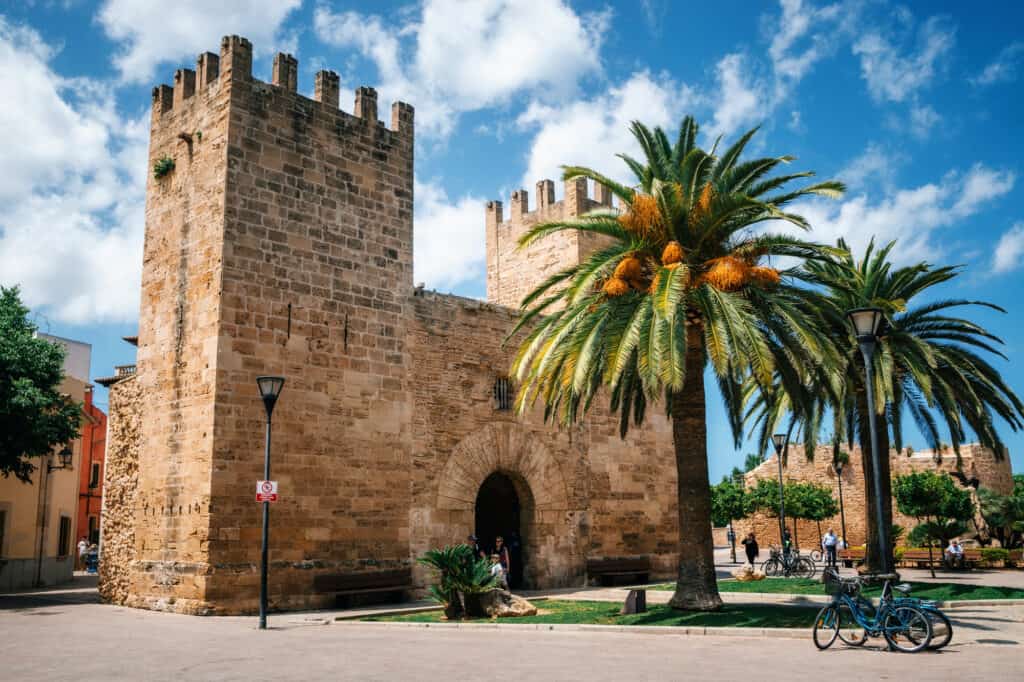
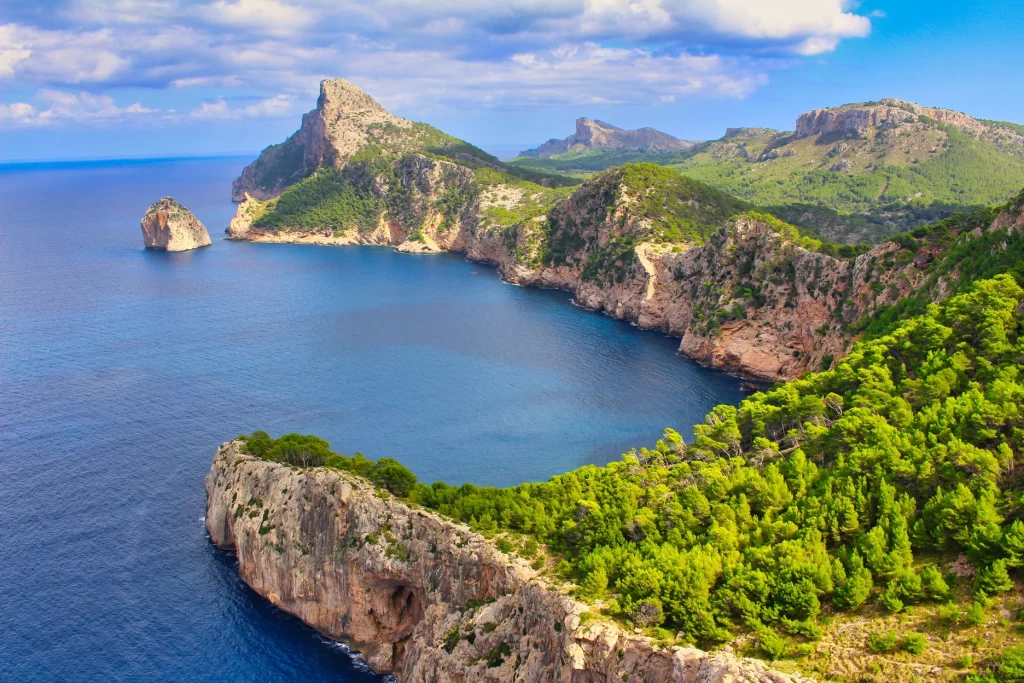
Valldemossa Charterhouse (Real Cartuja)
Visit the former royal residence of Valldemossa Charterhouse, where composer Frédéric Chopin and writer George Sand once stayed. Explore the monastery’s tranquil gardens, cells, and museum dedicated to Chopin’s life and work. Read more in my post 37 Unusual Facts about Mallorca.
Cala Varques
Escape the crowds and discover a hidden gem at Cala Varques, a secluded cove on Mallorca’s east coast. Accessible via a scenic hike or by boat, this pristine beach offers crystal-clear waters ideal for snorkelling and relaxation.
10. Shopping and Markets in Mallorca.
Mallorca offers a diverse shopping scene, ranging from bustling markets and artisanal boutiques to high-end designer stores. Here are some shopping destinations to explore during your visit to Mallorca:
10.1 Markets in Mallorca:
– Mercat de l’Olivar (Palma)
Located in the heart of Palma, Mercat de l’Olivar is the city’s largest indoor market. Here, you’ll find a vast array of fresh produce, seafood, meats, cheeses, and local delicacies, as well as stalls selling clothing, accessories, and household goods.
– Mercat de Santa Catalina (Palma)
Tucked away in the trendy Santa Catalina neighbourhood, this colourful market is known for its lively atmosphere and diverse offerings. You can browse stalls selling fresh fruits, vegetables, spices, and artisanal products, then grab a bite to eat at one of the market’s many tapas bars and restaurants.
– Sineu Market (Sineu)
Held every Wednesday in the charming town of Sineu, this traditional market is one of the oldest and largest on the island. Explore stalls selling local crafts, leather goods, ceramics, clothing, and souvenirs, as well as agricultural products and livestock.
– Alcúdia Market (Alcúdia)
Held every Tuesday and Sunday in the historic centre of Alcúdia, this bustling market is a must-visit for bargain hunters and souvenir seekers. Browse a wide selection of artisanal products, textiles, jewellery, leather goods, and local produce, all set against the backdrop of the town’s medieval streets.
10.2 Boutiques and Shops in Mallorca:
– Passeig del Born (Palma)
This tree-lined boulevard in Palma is lined with chic boutiques, luxury stores, and designer brands. Explore high-end fashion labels, jewellery stores, and stylish homeware shops, as well as trendy cafes and bars for a shopping break.
– Carrer de Sant Miquel (Palma)
This pedestrian street in Palma’s Old Town is known for its eclectic mix of shops and boutiques. Browse artisanal crafts, handmade jewelry, vintage clothing, and quirky souvenirs, while soaking up the historic ambiance of the surrounding streets.
– Plaza Mayor (Palma)
Situated in the heart of Palma’s historic centre, Plaza Mayor is a bustling square surrounded by shops, cafes, and restaurants. Explore souvenir stalls, artisan workshops, and boutiques selling local products, as well as international brands and department stores.
– Port d’Andratx
This picturesque coastal town is home to a selection of upscale boutiques and galleries catering to discerning shoppers. Browse designer clothing, luxury accessories, fine art, and home decor items, then take a leisurely stroll along the waterfront promenade.
11. Where to Stay in Mallorca.
Here are some suggestions for where to stay in Mallorca. I will also include a map from Booking.com which shows hotels by location.
Palma: The capital city offers a range of accommodations, from luxury hotels to boutique guesthouses. Stay in the historic Old Town for easy access to landmarks like Palma Cathedral and Bellver Castle. See the best rates on Palma accommodation on Booking.com.
Beach Resorts: Explore seaside towns like Magaluf, Alcudia, or Cala d’Or for a beachfront retreat. These areas boast an array of hotels, resorts, and vacation rentals catering to various budgets. See the best rates on Alcúdia accommodation.
Rural Retreats: Experience Mallorca’s tranquil countryside by staying in a charming finca (traditional farmhouse) or rural villa. These accommodations offer peace and seclusion while still being within reach of the island’s attractions. See the best deals on Deià accommodation.
12. Map showing hotels in Mallorca.
The map below shows prices of hotels by geographical location from Booking.com. You can zoom in, zoom out, or drag the map to see towns you are interested in. Click the map to look at more prices, and reserve your room (you can always cancel later).
Booking.comBooking links for towns in Mallorca.
Here are some Booking.com links for popular towns in Mallorca. These links will get you the best price on Booking.com today. It’s always a good idea to go ahead and reserve your room, since you can usually cancel later for free if you need to.
Hotels in Palma De Mallorca | Hotels in Pollença | Hotels in Sóller | Hotels in Valldemossa | Hotels in Alcúdia | Hotels in Deià | Hotels in Andratx | Hotels in Fornalutx | Hotels in Banyalbufar | Hotels in Campos | Hotels in Porto Cristo | Hotels in Santanyí | Hotels in Artà | Hotels in Sa Pobla | Hotels in Capdepera | Hotels in Muro | Hotels in Petra | Hotels in Llucmajor | Hotels in Algaida | Hotels in Son Servera | Hotels in Colònia de Sant Jordi | Hotels in Cala D’Or.
13. Sustainable travel in Mallorca.
As travellers, we have the opportunity to explore Mallorca responsibly and minimise our environmental impact while supporting local communities. Here are some tips for sustainable travel in Mallorca:
13.1 Eco-Friendly Transportation Options:
- Public Transportation: Use Mallorca’s efficient public transportation system, including buses and trains operated by TIB (Transport de les Illes Balears), to reduce carbon emissions and traffic congestion.
- Cycling: Rent a bike and explore Mallorca’s scenic countryside and coastal roads on two wheels. Many towns offer bike rental services, and the island has designated cycling routes and bike-friendly infrastructure.
- Walking: Opt for walking tours or self-guided walks to explore Mallorca’s towns, cities, and natural areas. Not only is walking a sustainable mode of transportation, but it also allows you to immerse yourself in the local culture, interact with locals, and discover hidden gems off the beaten path.
13.2 Reducing Plastic Waste:
- Reusable Water Bottles: Carry a reusable water bottle and refill it from water fountains or taps to reduce single-use plastic consumption. Many accommodations and restaurants in Mallorca offer filtered water or water refill stations, allowing you to stay hydrated while minimising plastic waste.
- Reusable Bags: Bring your own reusable shopping bags when visiting markets, grocery stores, or souvenir shops. Say no to single-use plastic bags and opt for eco-friendly alternatives, to reduce plastic pollution and protect the island’s natural environment.
13.3 Supporting Local Communities:
- Shopping Local: Support local artisans, craftsmen, and businesses by purchasing handmade souvenirs, locally-produced goods, and authentic products. Visit markets, artisan workshops, and boutique stores to discover unique treasures and contribute to the livelihoods of local entrepreneurs.
- Eating Local: Sample Mallorcan cuisine at local restaurants, cafes, and eateries that use locally-sourced ingredients and traditional recipes. Indulge in fresh seafood, seasonal produce, and regional specialties, while supporting sustainable food practices and preserving culinary heritage.
13.4 Respecting Natural and Cultural Heritage:
- Leave No Trace: Respect Mallorca’s natural environment by disposing of waste properly, staying on designated trails, and avoiding activities that may harm wildlife or damage ecosystems. Leave beaches, forests, and historic sites as you found them, ensuring they remain pristine for future visitors to enjoy.
- Cultural Respect: Learn about Mallorca’s history, traditions, and customs, and show respect for local culture and heritage. Be mindful of cultural sensitivities, dress codes, and etiquette when visiting religious sites, participating in festivals, or interacting with locals.
By adopting these sustainable travel practices, we can minimise our environmental footprint, support local communities, and contribute to the preservation of Mallorca’s natural beauty and cultural heritage. Let’s travel responsibly and leave a positive impact.
14. Frequently Asked Questions: Mallorca Travel Guide.
Q: What is the correct spelling of Mallorca?
A: The correct Spanish spelling is ‘Mallorca’. The alternate spelling ‘Majorca’ is an anglicised version of the Spanish name ‘Mallorca’. While both spellings refer to the same island, ‘Majorca’ is more commonly used in English-speaking countries, particularly in the UK.
Q: What is the best time to visit Mallorca?
A: The best time to visit Mallorca is during the spring (April to June) and autumn (September to October) months when the weather is pleasant, and the island is less crowded than in the peak summer season.
Q: How do I get to Mallorca?
A: Mallorca is accessible by air and sea. Palma de Mallorca Airport (PMI) receives flights from major cities across Europe and beyond. Ferries operate between Mallorca and mainland Spain, as well as neighbouring islands such as Ibiza and Menorca.
Q: What are the must-visit attractions in Mallorca?
A: Some must-visit attractions in Mallorca include Palma Cathedral, Bellver Castle, the historic Old Town of Palma, the beaches of Es Trenc and Cala Agulla, and picturesque towns like Valldemossa and Sóller.
Q: What outdoor activities can I enjoy in Mallorca?
A: Mallorca offers a range of outdoor activities, including hiking in the Tramuntana Mountains, cycling along coastal roads, water sports such as sailing and snorkelling, and beach relaxation at the island’s pristine beaches.
Q: What is the local cuisine like in Mallorca?
A: Mallorcan cuisine is influenced by Mediterranean flavours, with an emphasis on fresh seafood, paella, ensaïmades (pastries), sobrasada (cured sausage), and local wines. Be sure to try traditional dishes at local restaurants and markets.
Further Reading: What to Eat in Mallorca.
Q: Is it necessary to rent a car in Mallorca?
A: In this Mallorca travel guide, I recommend renting a car in Mallorca. Renting a car is not necessary but can be convenient for exploring the island, especially if you plan to venture beyond the main tourist areas. I recommend using Discover Cars – a car comparison website. Alternatively, public buses and taxis are available for getting around.
Q: Are there any cultural customs or etiquette I should be aware of in Mallorca?
A: While in Mallorca, it’s respectful to observe local customs such as siesta time (afternoon rest) and dining etiquette. Learning a few basic phrases in Spanish can also enhance your interactions with locals.
Q: What are some popular nightlife options in Mallorca?
A: Popular nightlife options in Mallorca include exploring Palma’s La Lonja district for cocktail bars, clubs, and live music venues. During the summer months, beach clubs and open-air parties are also popular choices for nocturnal entertainment.
Q: Are there any precautions I should take while visiting Mallorca?
A: While Mallorca is generally safe for tourists, it’s advisable to take precautions against pickpocketing and to stay hydrated during hot summer months. Additionally, be mindful of sun exposure and apply sunscreen regularly.
Q: Can I use English to communicate in Mallorca?
A: Yes, English is widely spoken in Mallorca, especially in tourist areas. Additionally, many locals also speak German and other languages commonly spoken by tourists.
Q: What are some family-friendly activities in Mallorca?
A: Mallorca offers various family-friendly activities such as visiting water parks like Aqualand and Western Water Park, exploring the Palma Aquarium, taking a boat tour along the coast, or enjoying a leisurely bike ride along designated paths.
Q: Are there any day trips or excursions I can take from Mallorca?
A: Yes, there are several day trip options from Mallorca, including visiting the neighbouring islands of Menorca and Ibiza, exploring the Cabrera Archipelago National Park, taking a scenic train ride from Palma to Sóller, or touring the Caves of Drach in Porto Cristo.
Q: What is the currency used in Mallorca?
A: Mallorca, being a part of Spain, uses the Euro (EUR) as its currency. It’s advisable to carry some cash for small purchases, although credit and debit cards are widely accepted in most establishments.
Q: Are there any special events or festivals I should plan my trip around?
A: Mallorca hosts several festivals and events throughout the year, including the Fiestas de San Sebastián in January, the Carnival celebrations in February, the Sant Joan festivities in June, and the Fiestas del Rey Jaime I in September. Additionally, various cultural events, concerts, and markets take place regularly, providing visitors with unique experiences.
Related reading for Mallorca Travel Guide.
Below are some related posts for this Mallorca travel guide. If you’re a fan of islands, you may also like to check out Madeira Island, Cyprus and the Canary Islands.
Mallorca Travel Guide: Pinterest Pins.
If you have enjoyed reading Mallorca Travel Guide, or found it useful, please feel free to use the below images to pin to your own Pinterest boards.

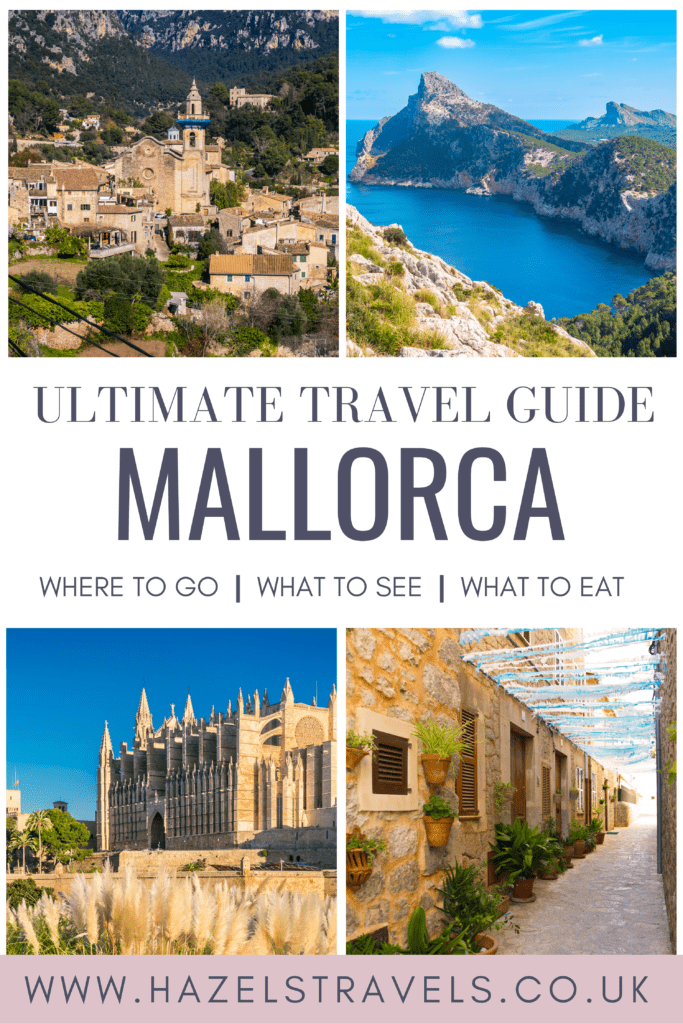
Found this post helpful? Buy Me a Coffee!
You are reading Hazel’s Travels – an online publication and travel blog which aims to provide advice and inspiration for travel in Europe, the UK and USA.

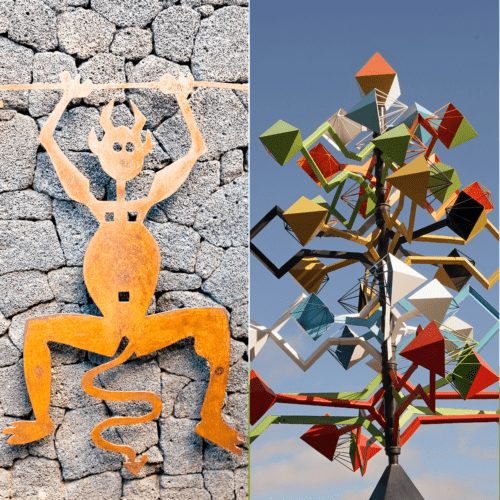
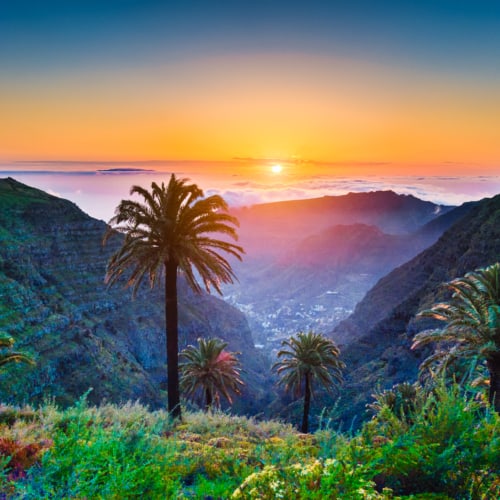
Leave a Reply